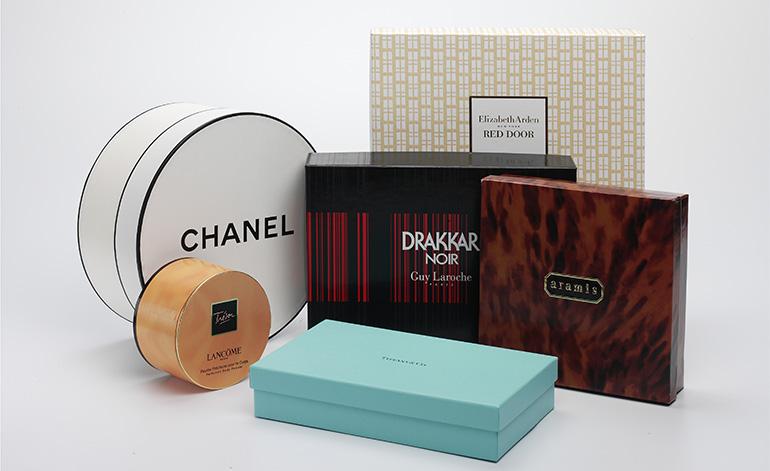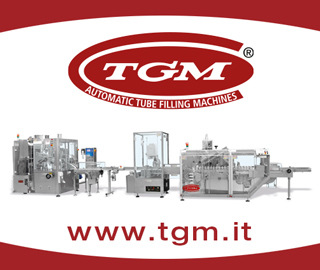Innovating tradition: AI, blockchain and sustainability in the luxury world
The keys to understanding the selective market proposed by an expert such as Anna Maria Tartaglia lead to interesting reflections: the search for out-of-the-ordinary quality and the capacity to arouse emotions remain the cornerstones of the luxury sector (packaging included) but the availability of new technologies makes it possible to dialogue with consumers in a more open and engaging way, with full anti-counterfeiting control. And a new path opens up.
M. Costanza Candi

She is the CEO of TheBrandSitter agency dedicated to the strategic development of high-end brands in international markets and in the past has worked as strategic planner for important international advertising agencies and as global marketing and communications top manager for brands of the calibre of Trussardi, Ferragamo, Superga and Value Retail.
Anna Maria Tartaglia is a luxury market expert with expertise that ranges from traditional craft concepts - the roots of the segment – to visions of the future offered by the world of start-ups. These are the themes she reflected on with ItaliaImballaggio, looking at cross-cutting luxury trends and their impact on packaging, the indispensable complement to the shopping experience with its emotional anticipation.
«Luxury is entering the world of literally me - Tartaglia begins – and is increasingly characterised by the desire to show oneself beyond aspirational objects. We’re, therefore, talking about the tendency of consumers to attribute a very high value to the uniqueness and status of an object, returning, in essence and fortunately, to out-of-the-ordinary quality, personalization and hyper-personalisation. In short, the new trend is having something that no-one else has. I’m thinking, in particular, of the highest-end luxury market, which we can define as inaccessible, but which represents only a part of the segment. We should not forget, in fact, all the aspirational segments, composed of younger or emerging generations and, therefore, not only the Z but also the alpha generation: the luxury consumers of tomorrow. For them, the intangible, the experience, emotions and everything that is linked not only to the product itself but to authenticity and the values linked to the mixed, physical, digital experience, are important. ».

Digital universes and big data to strengthen the bond with the customer
«Companies are required to work on themes linked to cross-cutting trends including AI, generative AI, digitalisation and product exclusivity » Anna Maria Tartaglia continues. «In this context, technologies perform a determining role in the completion of processes, in particular with regards to greater consumer knowledge, acting on the relationship that is developed to intercept aspirations, tendencies and interests. There is a growing convergence between digital and physical and the experience of augmented reality and virtual reality, all contexts that make it possible to create new spaces for collaboration between the company and its customers».
Human-driven digital as an amplifier of knowledge
«Trends indicate that we will see the physical and the digital increasingly merging, even if I would like to point out that one will not prevail over the other because the human part of luxury will always remain fundamental. We will see this, in particular, in the relationship with stores and the evolution of distribution channels, in which creativity, product, means of communication and big data analysis strategies, necessary to acquire ever greater knowledge of the consumer, already have a strong impact. Increasing the experience and enhancing the product are objectives strongly influenced by creativity which, let’s not forget, will continue to be generated by people and not by machines. Digitalisation, innovation processes and AI will remain human-driven paths, especially in a sector like luxury goods.
If we look at artificial intelligence, for example, we can consider it a help and a support for knowledge, never an alternative but rather an amplifier of knowledge as it allows us to acquire information where man could not arrive in the same time.
Human analysis is, therefore, an added value which, in my view, a machine is not able to provide. Luxury is the expression of a very refined world in terms of product, processes and the psychological understanding of people: all aspects on which a machine cannot have the same impact as human creativity. On the other hand, it’s necessary not to be enslaved by technology, nor to passively delegate activities, but to look at technological innovation as a means for improvement and evolution, in which the machine is positioned at the start or the end of a process, in the centre of which there’s always the capacity for creative elaboration and intellectual synthesis typical of human nature ».
Combining the tradition of know-how and technological innovation
«It should be said that innovation and luxury have never travelled together. The fact that innovation concepts are emerging in the luxury world, with the search for new materials, prototyping, product process and supply chain improvement, marketing and phygital convergence, is a very positive development. Luxury is, in fact, a genre composed of human and craft "knowledge", ancient and sophisticated processes, and traditional materials.
Today, however, the concept of innovation has widened. The raw material has become innovative, grafting technological processes that make it possible to achieve the uniqueness of a material, making it particularly thin, hyper tactile, with particular characteristics. We can cite, for example, a wool produced in micron or alternative materials, created in the laboratory, coming from recycling or the compaction of recovered waste. The craftsman today is no longer the man at the table working with needle and thread, but is a protagonist: in the prototyping, in the development of innovative solutions, in the improvement of quality. Innovation in luxury is, therefore, a cross-cutting concept, also involving the world of the start-ups, which are a breath of fresh air for the sector ».
The contribution of start-ups to the protection of the brand, between traceability and blockchain
«Thanks to the R&D culture typical of the start-up world, applications have emerged, for example, that have also revolutionised the most well-established processes: we can refer to the development of blockchain models and product traceability which guarantee authenticity and quality in a context in which counterfeiting is increasingly widespread. What before was guaranteed by printing replicable and falsifiable guarantee certificates, today with blockchain becomes a more complex and safer process. Large corporate groups have understood this and are working on proprietary blockchains, given that anti-counterfeiting is increasingly based on this technology both in the primary and secondary market, in which it is now possible to define the origin of the product, the number of steps and its authenticity, preventing illicit routes and devaluation ».
Lux-packaging: essential complement to the product
In a market in which the detail is crucial, packaging becomes a prelude to the experience connected to the product, almost an emotional anticipation, a theme on which Anna Maria Tartaglia continues:
«The packaging plays an essential role as it is closely connected to the product. Consider, for example, the fact that online purchases of Hermes and Gucci boxes are very popular for collecting purposes; they express an emotional content and a strong connection with the brand even when you can’t afford the product. The container expresses important values, especially if we talk about luxury objects linked to the markets for clothing, accessories, jewellery, food & wine and spirits. In these contexts, the packaging performs an indispensable complementary function. We can refer to the unboxing phenomenon, which anticipates the emotion associated with a high-end product, creating a sensorial and emotional continuity, making the purchase experience even more intense and richer. ».
Smart packaging, between metaverse, augmented reality and NFT
«The technological evolution enriches and enhances the experience also in this context. I’m referring, in particular, to so-called smart packaging, interactive packaging that leads to multimedia content, augmented and virtual reality, metaverse, contexts through which brands provide additional and experiential information accessible with a QRCode.
The trends are heading, in particular, in the direction of the metaverse and its possible evolutions, while today the protagonists are gamification, NFT and augmented reality, seen as vehicles of involvement and entertainment, enrichment of the purchase experience and reinforcement of the bond with the brand. The objective is to bring the consumer closer, engage them and collect information on their consumption behaviour in order to carry out market analyses and reinforce after-sales. This aspect of smart packaging is probably the one with most scope for development. ».
Uniqueness as a tool for sustainable
luxury We can’t end without a reflection on sustainability, a key issue also for the luxury market, about which Anna Maria Tartaglia concludes:
«In the luxury field, sustainability is a determining factor, with an impact on traceability, production protocols, working conditions and environmental impact. In the high-end range, moreover, it promotes greater consumer identification with their favourite brand, thanks to an emotional and value content that enriches the product itself, becoming part of the narrative and storytelling linked to the brand which, by engaging and involving the consumer, speaks to them and motivates them. Let’s not forget, moreover, that luxury is created sustainable, because it’s designed to last thanks to the quality of the material, craft repair and replacement of parts: all green concepts and intrinsically always linked to luxury.
It’s necessary, however, to distinguish between real and apparent luxury; the latter is a world that has to find its own balance. Brands have to work on self-imposed rules that push them to produce less, better and with a control of the supply chain that brings production back to where environmental and social sustainability standards are respected. It’s a costly process, which requires commitment both for companies and for the consumer, called on to contain their excesses and to return to a quality product, for which less is also better. The hope is, therefore, an upwards alignment, with a greater awareness by brands of their educational role towards an evolved, informed and high-spending new generation of consumers. Brands must, therefore, be able to convey the value connected to the quality of the product and the process, integrating it in the consumer’s perception and orienting choices towards a demand that values unique pieces and is willing to spend for that object and its uniqueness.».





















